The Ultimate Grand Teton National Park Travel Guide
A visit to this northwestern Wyoming park, which is as thrilling for wildlife watchers as it is for climbers, hikers, and backcountry skiers, comes with a warning: it’ll be the beginning of a lifelong love affair
New perk: Easily find new routes and hidden gems, upcoming running events, and more near you. Your weekly Local Running Newsletter has everything you need to lace up! .
My��relationship with Grand Teton National Park started inauspiciously: I moved to Jackson Hole in northwest Wyoming unaware of the park or the mountains that are its heart. Of course I knew the town had mountains—I’d gone��there to be a ski bum for a��year, after all—but had no idea these mountains were the snaggled, serrated, rising-7,000-feet-straight-from-the-valley-floor Tetons, part of one of the world’s most intact ecosystems and home to glaciers, shimmering alpine lakes, and wild animals I knew only from photos, as well as more opportunities for adventure than I had the skills or fitness��to handle. On my first hike in the park, I got my mom and myself spectacularly lost—and also contracted a case of��giardia.
While floating down��the Snake River below Jackson Lake Dam two weeks later, my GI tract��still suffering,��I knew one year here would not be enough. I’m now on��year 24 and have learned that a lifetime isn’t enough��to explore this park, even if, at 310,000 acres, it’s only a fraction of the size of its 2.22-million-acre neighbor to the north, Yellowstone.
The first decade��I was here, family and friends on the East Coast and in the Midwest frequently asked when I was moving “back to civilization.” Then most of them came to my first wedding, a weeklong Wyoming affair packed��with hiking, wildlife watching, picnics, and scenic floats in my backyard, Grand Teton National Park. That marriage is long over, but��so are the queries about when I’ll move from this place. Now family and friends ask when they can come visit, what new things they can do in the park, and how they can avoid the crowds (it hosts��3.3 million visitors annually). I’m sharing with you what I tell them.
What You Need to Know Before Visiting��
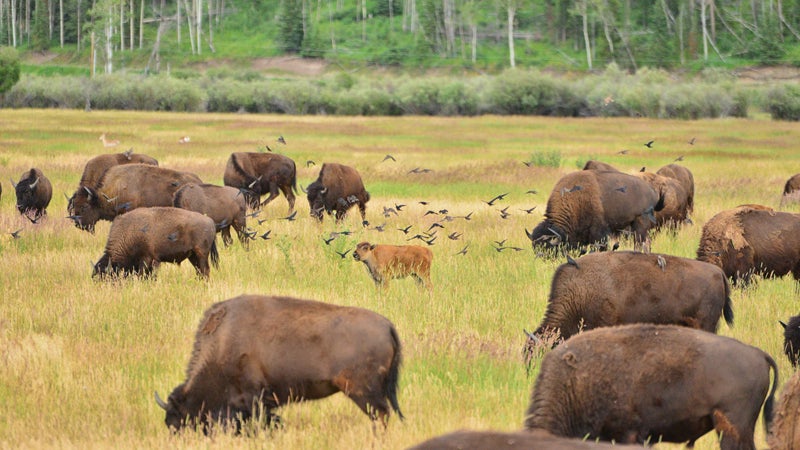
Wildlife is wild. Whether it’s a herd of bison on the flats just south of the park’s Moran entrance, grizzly bears in Willow Flats near Jackson Lake Junction, or moose up Cascade Canyon, the animals here are wild and need to be given space. Don’t be that visitor who gets gored or mauled: by��law you must stay at least 100 yards from bears and wolves and 25 yards from all other animals, including bison, elk, pronghorns, and moose. These are minimum distances, though; if an animal reacts to your presence, you’re too close. As ungainly as bison look, they can run at speeds of up to 30 miles an hour and jump a six-foot fence.
Expect the weather to change quickly. Bluebird summer mornings can morph into afternoon thunderstorms, and a calm lake can quickly develop whitecaps during the spring, summer, and fall months. Locals joke, “If you don’t like the weather, wait five minutes.” Always bring layers and check meteorologist Jim Woodmency’s before heading out.
You’ll likely need to make reservations for park campgrounds in advance. Summer 2021 is the first time sites at all of the park’s campgrounds can be reserved in advance. Previously, some campgrounds in the park worked on a first-come, first-served basis.
Roads close.��The park’s Inner Loop Road—from the Bradley-Taggart Lakes Trailhead to Signal Mountain—and its Moose-Wilson Road between the Death Canyon and Granite Canyon Trailheads are closed annually from November 1 to April 30 due to snow. The scenic drive up Signal Mountain is often closed until early July.
How to Get to Grand Teton National Park
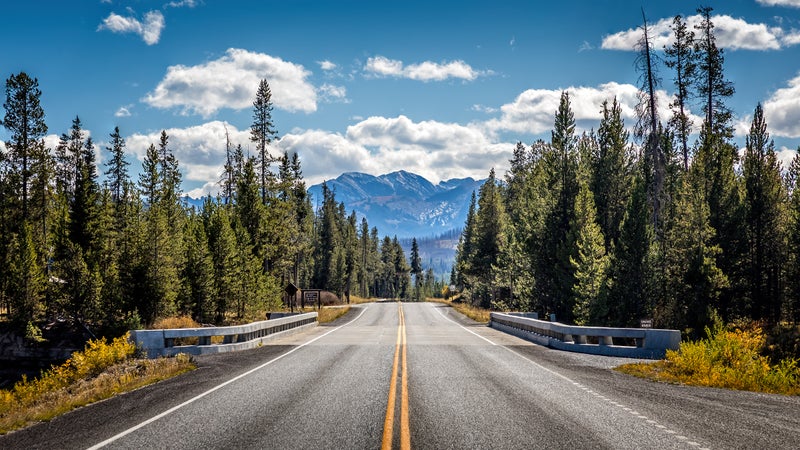
Grand Teton is unique among the national parks because it’s the only one home to a commercial airport.��That’s right: Jackson Hole Airport is in the park. So if you’re flying in,��you’ll want a window seat—and get the side of the plane correct: pick something on��the right side if your flight will be landing��from the north and something on the��left side if the plane will be coming��from the south.��You’ll be treated to amazing views of the Tetons.
If you’re driving, there are three��routes into Jackson Hole: U.S. Highway 191 from the south, Idaho Highway 33/Wyoming Highway 22 from the west, and, if you’re coming from Yellowstone National Park, an hour north of town, U.S Highway 191. If you’re after��the most awesome views, arrive from the northeast via Moran and Highway 26. There’s a point as��you’re descending Togwotee Pass (toe-go-tee) when the trees part and the Tetons explode into view. Even though I know this vista��is coming and have experienced it hundreds of times, it still takes my breath away.
The Best Time of Year to Visit Grand Teton National Park
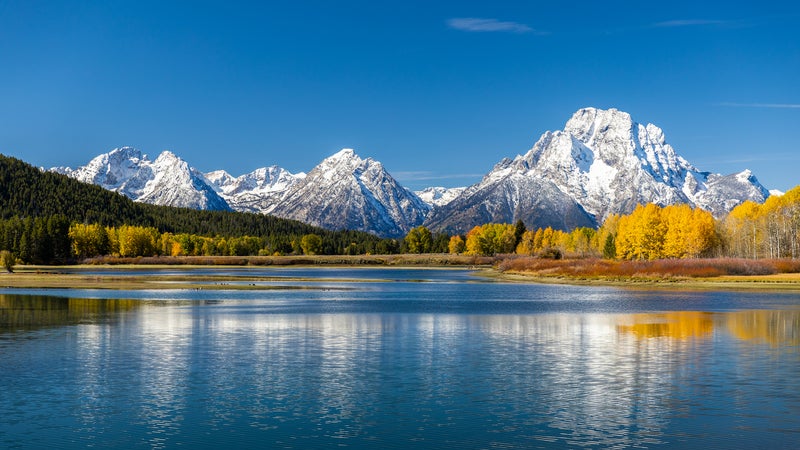
Winter
None of the park’s lodges, visitor centers, campgrounds, or restaurants are open in winter, usually from November to March or April. But that doesn’t mean you should stay away. From mid-December until mid-March, in partnership with , the park grooms the 14 miles of road that are closed to cars for classic and skate cross-country skiers. Visitors create snowshoe trails around Bradley and Taggart Lakes, and pretty much every peak in the range has��backcountry ski-adventure potential. Winter temperatures can sound brutally cold—there are usually a couple dozen days that don’t get warmer than zero—but there’s something to Wyoming’s cold being a dry cold. More usual winter highs are in the twenties,��with nights around zero.
Spring
This season is amazing for three user groups: skiers, cyclists, and grizzly bear watchers. For others, everything that is closed in winter remains closed. Trails that are not buried beneath snow are muddy, and lakes are usually still frozen. Spring skiing in the Tetons can be amazing, though: steep couloirs and faces that may be prone to avalanches are on the menu in corn-snow conditions.
Each spring since 1977, the Inner Park Loop Road has opened to nonmotorized traffic��the weeks between when it’s plowed (usually April 1) and when it opens to cars (May 1).��This tradition started because the former road surface needed to dry out for several weeks before cars could use it without damaging it; however,��though that surface was replaced in 1992, the custom��lives on. (It’s not just open to cyclists—running, in-line skating, skateboarding, and anything nonmotorized is fair game.)
The park’s grizzlies begin��to come out of hibernation in March, although females with cubs usually don’t appear until May. Spring temperatures are the most variable of any season: early-spring��highs can be in the teens, and when the season truly arrives in late April and early May, days are in the fifties��and sixties,��with nights around freezing.
Summer
The park usually stays quiet until mid-June, but��after that it’s game on—at least in the front country. is gorgeous and so, naturally, it’s��the single most visited spot in the park, but there are plenty of places to escape the crowds. Depending on the elevation, wildflowers are at their best in June (on the valley floor), July (between��7,000 and��9,000 feet), and August (at 9,000-plus feet). High-alpine trails are usually snow-free come July. Daytime temperatures��can be anywhere from��the seventies to the��nineties, while nightfall brings them down into the thirties��and forties. That said, I’ve��been snowed on while hiking at higher elevations in July and August.
Fall
Fall is my favorite season in the Tetons. Yes, the wildflowers are gone, but so too are the hordes. Also, have you ever heard an elk bugle? It’s an otherworldly sound. One of my favorite things to do is to grab a sandwich and a bottle of wine at , a restaurant just outside the park’s Moose entrance, and head to the historic , which was Jackson Hole’s second dude ranch when it opened in 1912, for a bugling concert. Bull elk often hang out near the Snake River here.
While it’s possible there will be new snow at the park’s higher altitudes, most hikes and backpacking itineraries are doable into October. Expect daytime temperatures��between the fifties��and seventies,��with most nights in the twenties��or thirties. Climbing season on the Grand Teton usually shuts down in mid-September.
Where to Stay in and Around Grand Teton National Park
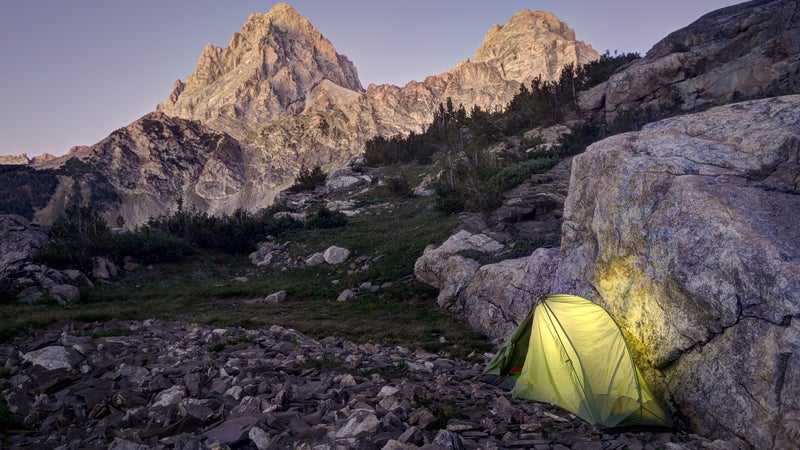
Lodging
Although many of the park’s lodges have��names that make them��sound like they’re on the water—Jackson Lake Lodge, Colter Bay Village, Jenny Lake Lodge—the only accommodation with waterfront rooms is (from $287). Its suite-style Lakefront Retreats are located��a stone’s skip from Jackson Lake. If you’re looking to splurge, (from $927, including breakfast and dinner for two adults)��is a collection of luxe, historic log cabins that are only a five-minute walk from hiking trails that lead to Cascade and Paintbrush Canyons.
The American Alpine Club runs the park’s most affordable non-camping option, the hostel-style (from $83 for two people). The ranch has a bathhouse, a communal cook shelter and library, and cabins with bunks. The park’s lodges are open from early May into October. �ٴǰ��Բ���’s , just outside the park’s Moose entrance, are open ten��months of the year (closed in November and April; from $125).
Campgrounds
This summer marks the first time all seven of the developed campgrounds in the park (from $38) are operating on an advance-reservation system. This year��the Colter Bay RV Park and Tent Village and the Headwaters Campground remain reservable via the����but will move over to Recreation.gov for the 2022 season. The only has tent sites. The campgrounds accommodate tents, RVs, and trailers, and all of these (with the exception of ) have various��levels of hookups and dump stations.
What to Do in Grand Teton National Park
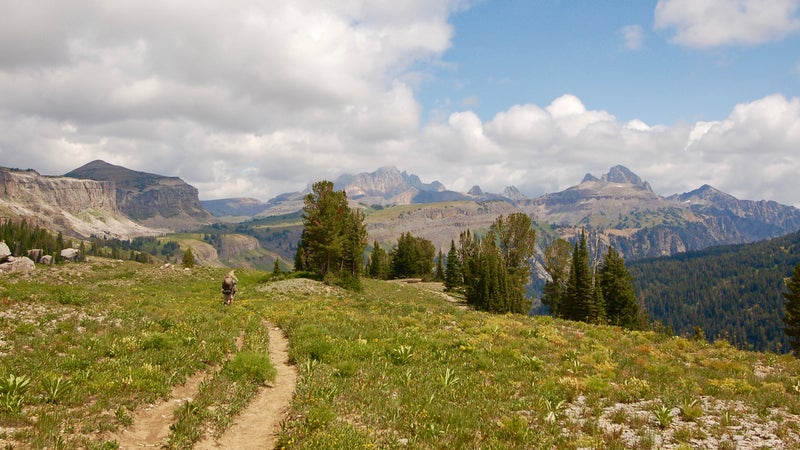
Backcountry Skiing
All backcountry skiing requires knowledge of how to safely travel amid��avalanche terrain. If you’ve got the skills, ski objectives in the park range from the relatively mellow�� to steep couloirs on . Even the Grand Teton is skiable. (June 15, 2021, marks the 50th anniversary of ��becoming the first person to ski the Grand; his descent is often credited with jump-starting ski mountaineering in the U.S.)
Fishing
A river (the Snake) runs through this park, and anglers travel from around the world to . The Snake is special for its endemic species of trout, the Snake River fine-spotted cutthroat, and is also home to rainbows, browns, and brookies. The park’s lakes are open to fishing, too. A Wyoming fishing license is required.
Rock Climbing
Royal Robbins, Fred Beckey, Al Read, Yvon Chouinard, Willy Unsoeld, Barry Corbet, Mike Munger, Leigh and Irene Ortenburger, Richard Pownall, and Peter Lev are just a few of the climbers to establish��many of the routes��that are Teton classics today. Non-climbers often set their sights on summiting��13,774-foot Grand Teton, which is possible for those without climbing experience as part of a multi-day climbing-school experience with one of two guiding companies that work in the park, and . Experienced trad climbers head up Death Canyon for routes like the Snaz (5.10) and Dihedral of Horrors (5.9) or��up Garnet Canyon to Irene’s Arête (5.8) and Open Book (5.9). Got climbing questions? Your best bet for beta is the .
Rafting
The Snake River is scenic—think Class I–II rapids—but that doesn’t mean it’s easy. It’s heavily braided and clogged with deadfalls and snags, and people die on these sections as often as they do in the Class III–IV whitewater of��Snake River Canyon, south of the park. Several outfitters offer guided trips in the park. I send my visiting family and friends on the stretch from .
Backpacking
If you want to backpack here, chances are you’ve heard of the 40-mile Teton Crest Trail, which stretches from Granite Canyon in the southern part of the park to Paintbrush Canyon in the north. Highlights include Marion Lake, the (a skinny��three-mile plateau where cliffs rise 300 feet to��one side and Death Canyon is visible 1,000 feet below��on the other), the Alaska Basin, and Schoolroom Glacier (so named because it is a textbook example of one). Done over three to five days, start by hiking up Granite Canyon to Marion Lake, or if you’d like a lift assist up 4,100 vertical feet, hop the����and hike down to Marion Lake. (Note that the tram is closed this summer for routine maintenance.)
If you can’t get permits for the Crest Trail or are looking for a shorter trip, making a loop of two of the park’s canyons is a worthy consolation. Granite Canyon can be looped with Open or Death Canyons,��Death Canyon can be looped with the South Fork of Cascade Canyon,��and the North Fork of Cascade loops with Paintbrush Canyon. These vary in length from 18 to 26 miles. ($35) for all backcountry camping.
Day Hiking
It won’t feel like it as you approach Lake Solitude, but this hike is one of the flatter options in the park. (Mountain ranges lacking foothills are steep.) The six-mile trail from Jenny Lake to climbs only 2,300 vertical feet. In comparison,��the five-mile hike from the Lupine Meadows Trailhead to climbs 3,000 feet, and the eight-mile hike from the Death Canyon Trailhead to ’s��11,308-foot summit ascends��5,000 vertical feet.
My single favorite trail hike in the park is the 18-mile , which passes Holly Lake and Lake Solitude and tops out at Paintbrush Divide, elevation��10,700 feet.
Truly flat (and shorter)��hiking trails are found in the park’s , a 1,106-acre park within the park and the former site of a Rockefeller summer home.��Eight miles of trails here head��to and around Phelps Lake.
Wildlife Watching
Grand Teton is part of the , one of the largest intact temperate ecosystems in the world. This means that all of the wildlife living in the region prior to the arrival of Europeans, including grizzly and brown bears, moose, bison, wolves, pronghorns, bighorn sheep, and elk, among other animals, still live here. This park’s most famous wild resident is , a sow born in 1996 that has birthed three sets of triplets and, in 2020, emerged from her den with four cubs, which is rarer than having Jenny Lake to yourself on an August day. Grizzly 399 is famous not only for her fertility, but also because she hangs around roads in the park’s northern reaches. If you’re looking for moose, try the wetlands at the northern end of .��Bison are most often found on the northern part of Antelope Flats Road or in the sage flats several miles south of the park’s Moran entrance.
Stargazing
This park isn’t recognized by the ��like some parks in Utah and Nevada, but the skies here are still clear enough that you can see the Milky Way and thousands upon thousands of stars with the naked eye. If you want to see Saturn’s rings and distant galaxies, the Jackson-based nonprofit offers stargazing safaris. It also hosts astrophotography lessons.
Cycling
There might be prettier pathways than those in Grand Teton National Park, but I’ve yet to ride them. Pair the park’s ��from South Jenny Lake to the bridge over the Gros Ventre River south of Kelly Junction with and you can pedal��all the way from Jenny Lake to downtown Jackson without sharing space with cars. Jenny Lake to Jackson is 18 miles one-way. A shorter option is��Jenny Lake to the park’s , a 12-mile round-trip.
The Best Places to Eat and Drink Around Grand Teton National Park
You don’t usually go to national parks to eat, but Grand Teton is an exception. If you want to treat yourself to fine dining, there are two excellent choices:��the at Jackson Lake Lodge and the . The former has an on-site butcher and panoramas��of Jackson Lake and Mount Moran that can make you forget you’re here for the food, and the butter that accompanies the warm, house-made bread comes in the shape of a moose. The latter features��a five-course prix fixe menu served in a cozy and historic log cabin. Men are��required��to wear sport coats. (In non-COVID��times, the Jenny Lake Lodge Dining Room is open, by reservation, to non-guests. This summer��it is only open to lodge guests.) Jenny Lake Lodge’s breakfast menu includes bison hash, huckleberry pancakes, and hot-from-the-oven pastries. Enjoy drinks with a view at the in Jackson Lake Lodge and at the�� at �ٴǰ��Բ���’s in the community of Moose.
It’s worth making the trip into either Jackson or Wilson to stock up on sweet and savory treats at one of two locations. For beer, don’t miss , where you can sip a pint of Snake River Pale Ale or Jenny Lake Lager while sitting around a giant bonfire on the front lawn, or the beers served at , where Kung Fu movies are sometimes playing on the TVs at the bar.
If You Have Time for a��Detour
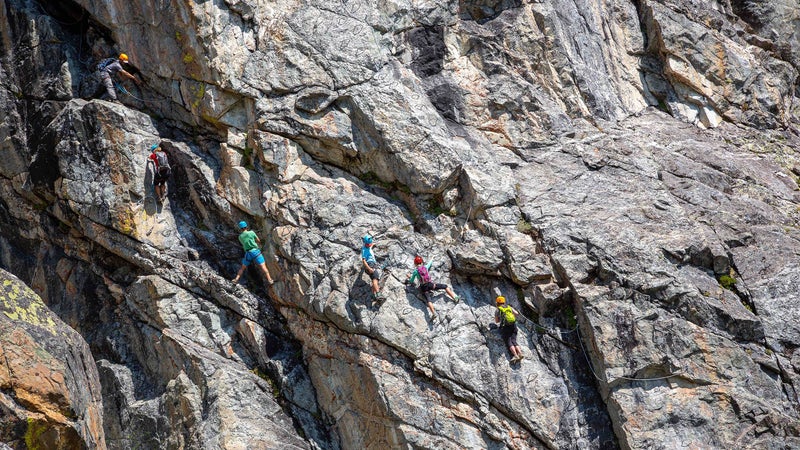
Almost 20 years ago, Connie Kemmerer, one of the owners of , located a couple of miles south of the park’s Granite Canyon entrance, was vacationing in the Dolomites in Italy. While on a guided hike, Kemmerer says she saw “these people up on a mountain, climbing but not totally climbing.” Her guide��explained that they were on a��via ferrata, a type of rock climbing in which bolts, rungs, and strands of cable are affixed to natural rock features with the goal of making routes easier and safer. Kemmerer thought the resort’s��granite buttresses would be ideal for such climbs, and in 2017, it introduced��four , with several more following��in 2020, including Iron Way, which ends by crossing a 110-foot bridge suspended 80 feet above what��in winter��is a double-black-diamond ski run. Recover from your adventures with a soak in the newly revitalized (from $18) on the banks on the Snake River about 45 minutes south of the park.
How to Be a Conscious Visitor
You’ve just hiked to the most Instagrammable high-alpine lake you’ve ever seen and want to share it with all your followers. Please don’t geotag your precise location. At��, a malachite-hued, glacial-fed body of water��picturesquely positioned at the feet of Disappointment Peak and the Grand Teton that creates incredible mirror reflections of those mountains, the area��has been so severely damaged by hundreds of quick-hit daily visitors that the local tourism board started an ad campaign asking them��to use the generic geotag “” instead of specific locations.
